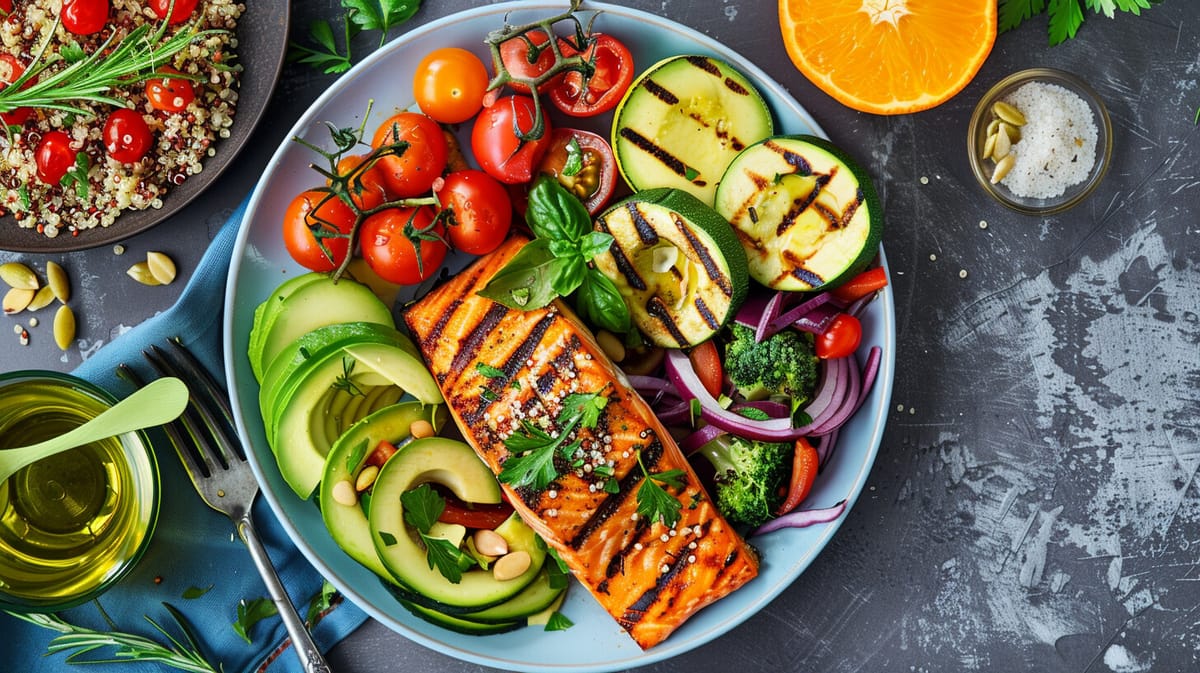5 Essential Elements of a Balanced, Nutrient-Packed Plate

Introduction
Eating well doesn't require a total dietary overhaul. With a few simple tweaks, you can transform your plate to get maximum nutrition at each meal while still enjoying your favorite foods. The key is knowing the essential components that make up a healthy, balanced plate.
1. Pile on the Produce
The foundation of any nutritious meal is fresh vegetables. Aim to fill half your plate with a colorful array of veggies at lunch and dinner. They are packed with vitamins, minerals, antioxidants, and fiber to keep you satisfied. Choose a variety of vegetable colors each day to ensure a diverse mix of nutrients.
2. Choose High-Fiber Carbs
Dedicate one quarter of your plate to fiber-rich carbohydrates. Some great options include beans, lentils, whole grains, high-fiber breads, corn tortillas, bean-based pastas, and starchy vegetables like sweet potatoes. High-fiber carbs are more nutrient-dense than refined grains and play a key role in weight management, digestive health, blood sugar control, and even mood.
3. Pick Lean Proteins
The remaining quarter of your healthy plate is reserved for protein. Protein takes longer to digest, keeping you full and satiated between meals. It's essential for building muscle, producing hormones and enzymes, transporting oxygen in your body, and creating bones, cartilage and skin. Choose lean protein sources such as fish, poultry, eggs, low-fat dairy, and lean meats. Plant proteins like beans, nuts and seeds also make great additions.
4. Favor Healthy Fats
While they may be calorically dense, your body needs healthy fats to thrive. Fats help you absorb vitamins A, D, E and K, and provide essential fatty acids. The healthiest fats come from plant sources like avocados, nuts, seeds, and olive oil. These foods are rich in monounsaturated fats and offer bonus vitamins and minerals. Use them in place of saturated fats like butter or sour cream to boost nutrition.
5. Put it All Together
Once you know the elements of a balanced plate, building healthy meals becomes second nature. Start with a base of vegetables, add a serving of lean protein, include some fiber-packed carbs, and incorporate small amounts of healthy fats. This simple formula works for any meal. A nutritious breakfast might be scrambled eggs with veggies, avocado toast, and berries. For a balanced lunch, try a big salad topped with beans, chicken or fish and a vinaigrette. Dinner could be lentil pasta with marinara and sautéed veggies or teriyaki salmon with quinoa and garlicky greens.
Conclusion
Creating a nourishing plate doesn't have to be difficult. By focusing on these five core elements—produce, high-fiber carbs, lean proteins, healthy fats—you can easily assemble meals that are tasty, satisfying, and nutritionally balanced. With some practice, this approach becomes a natural way of eating that supports your health and well-being long-term. So start building a better plate today, one delicious forkful at a time!




